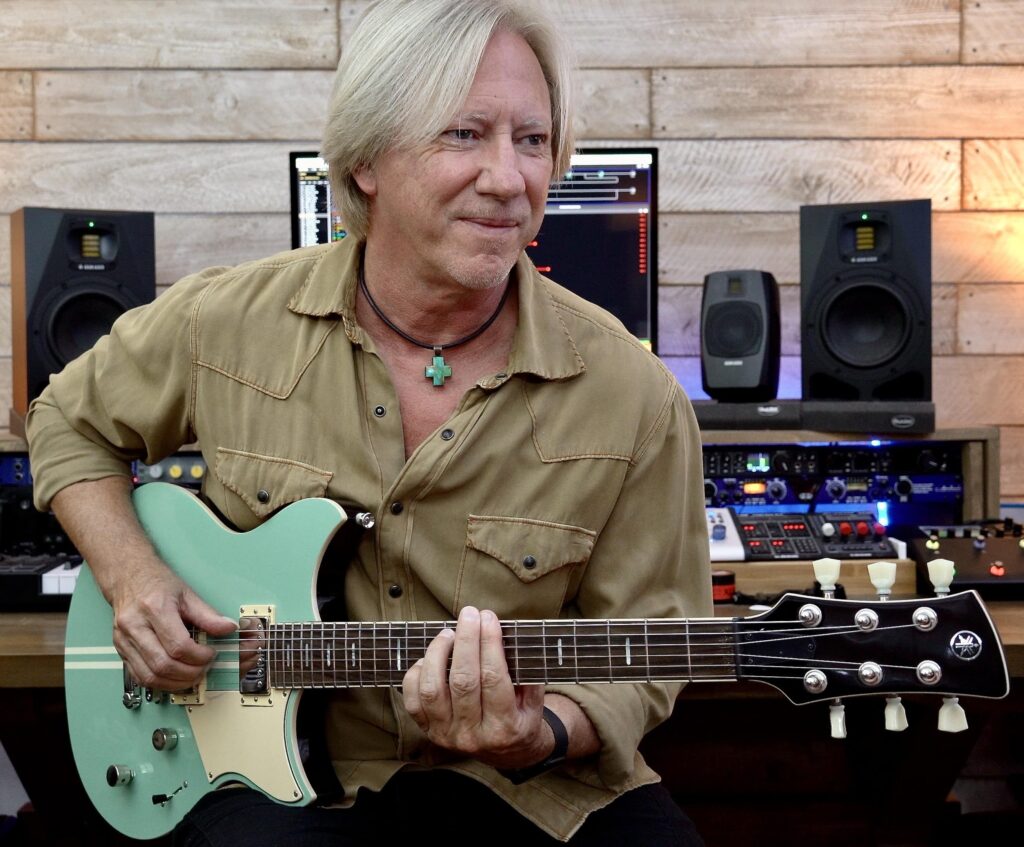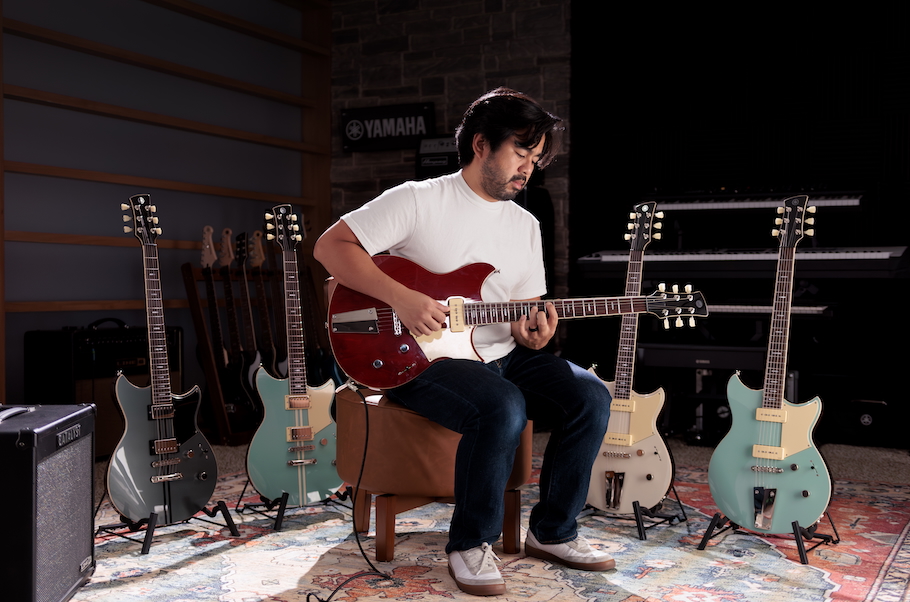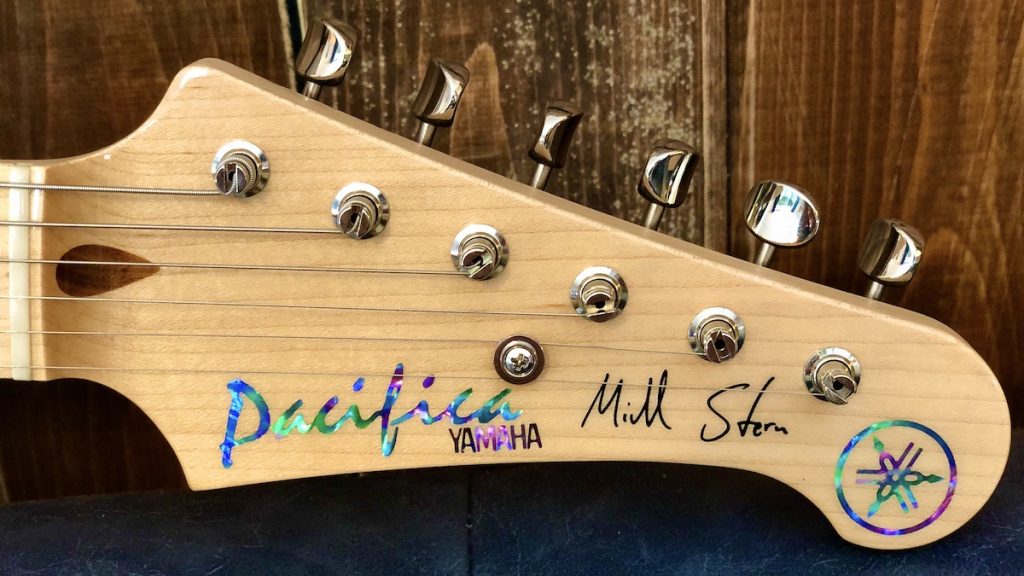10 Spooky Guitar Sounds
Make your guitar sound scary this Halloween.
It’s that time of the year again, when ghosts, vampires and witches abound. If you want to get into the spirit of Halloween, here are 10 ways you can make your electric guitar sound scary.
My tools for creating these spooky sounds were a Yamaha THR30II WL Wireless desktop amplifier, a Line 6 Helix LT effects pedal, the Line 6 Helix Native plug-in, the Steinberg roomworksSE plug-in, and/or some combination thereof. All the audio clips were recorded into Steinberg Cubase, with all the guitar parts tracked direct. (The line outputs of the THR30II and the Helix LT were connected to the inputs on my audio interface.)
Note that you can freely transfer any sounds you create in the Helix Native plug-in to and from Helix LT or other Helix pedals. They all offer the same effects and architecture, so you can consider them interchangeable.
1. Monstrous Chords
This sound utilizes a high-gain setting from the THR30II for distortion, along with the amp’s built-in Chorus and Echo/Rev effects. Reverb is almost always helpful in creating a spooky sound, but because I wanted one with an even longer decay than what was available on the amp, I inserted Cubase’s roomworksSE plug-in. If you’re just using the amp alone, you can still get a close approximation with the settings shown below.
With this sound, it helps to play a part with some dissonant notes if you want it to sound really spooky. The audio clip below has me playing some power chords (root and fifth only, with no third) under which I’m adding pulsing bass notes on the (mostly open) low E string. There are also a couple of half-step chord changes, which add to the scary vibe. Near the end, I hit a harmonic and let it ring out. As it did, I moved the whammy bar on my guitar slightly to make the pitch warble.


2. Shakey Ghosts
Like the previous example, this sound features the THR30II with a similar high-gain setting, only this time using the amp’s built-in tremolo to provide pulsing modulation. Ambience comes from the amp’s Hall reverb and roomworksSE. The decay on roomworksSE is over 11 seconds, which is much longer than you’d use for conventional music production but works here to create the cavernous space needed.

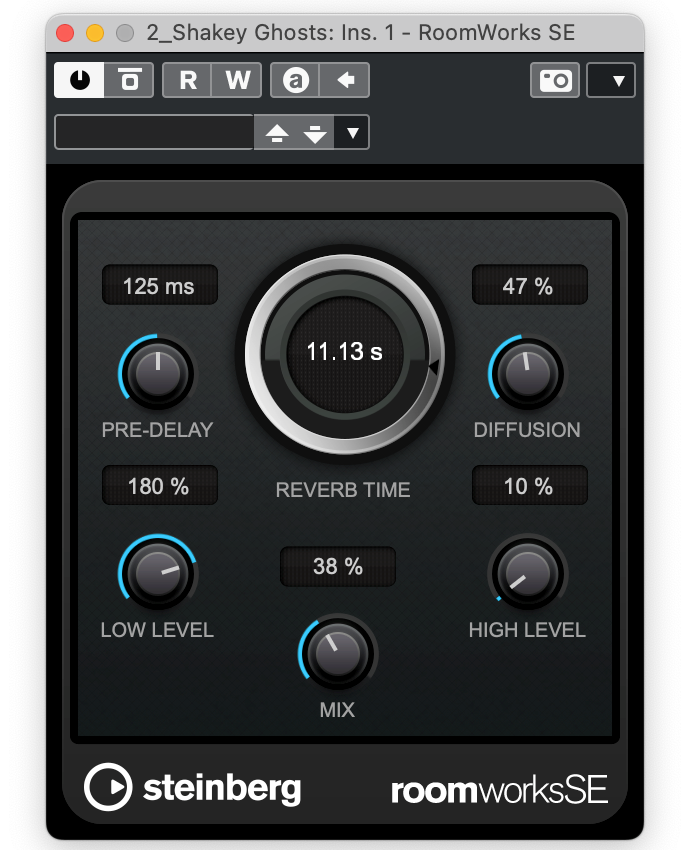
3. Mutant Spaceship Landing
All the effects and the amp sound for this one came from the Helix LT pedal. The setting combines a slightly crunchy amp sound with a bit of added distortion. The pulsating sound comes from a unique Line 6 delay called Bubble Echo, which creates a sample-and-hold effect similar to what you’d get on a synth. I also included some Harmonic Tremolo. The playing technique consists of slowly scraping a pick down the low E string from the top of the neck all the way to the nut. It’s fun and easy … plus you don’t need to have any guitar chops to play this one.
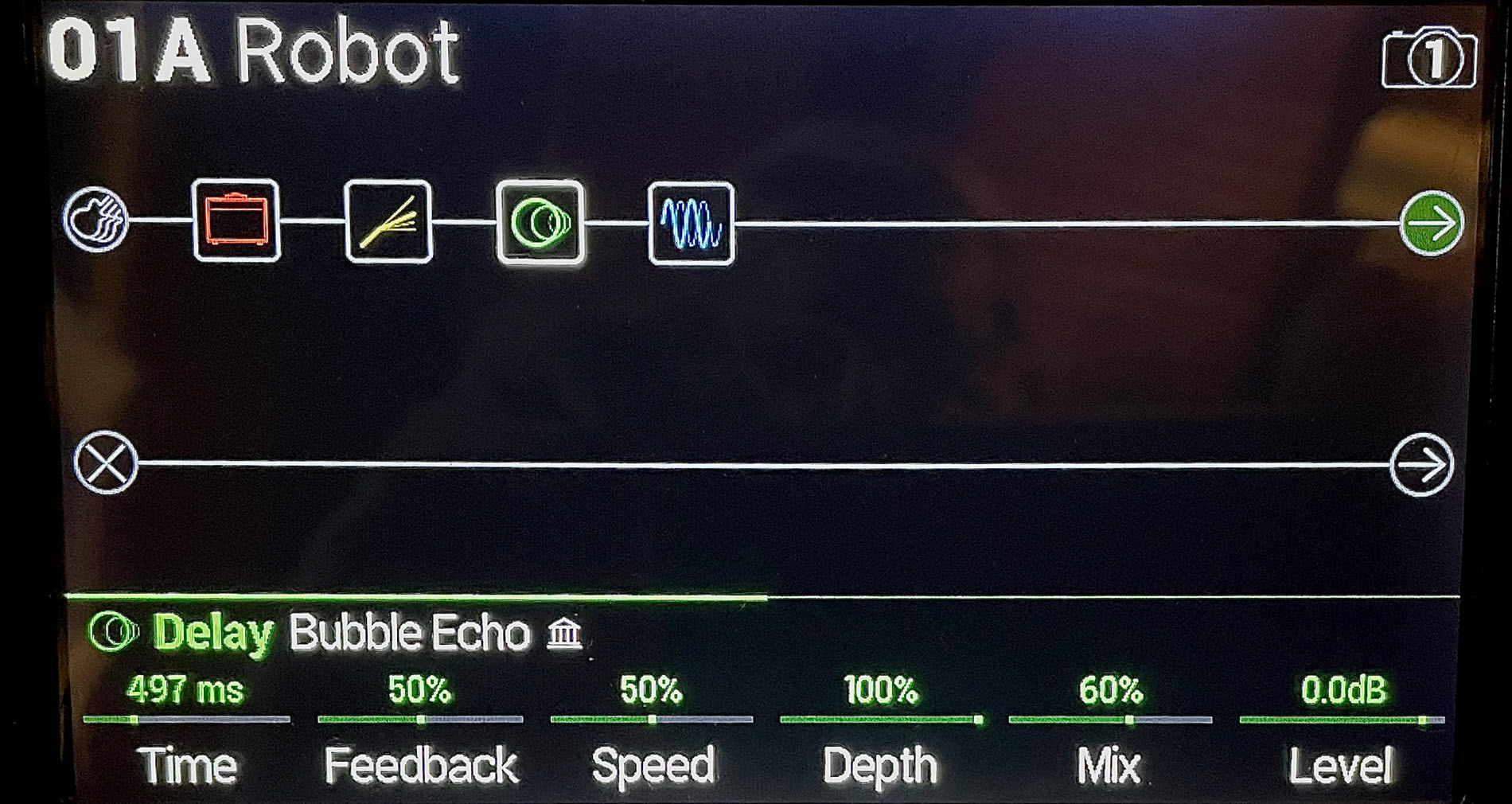
4. Alien Flux
I used the Helix Native plug-in to create this outer-worldly effect. Settings include US Double Nrm amp and 2×12 cab, along with Adriatic Swell, a swelling delay. The most critical effect in the signal chain is the Helix Mutant Filter, which provides the moving filter sound that’s key to the ethereal vibe.
The audio clip demonstrating this sound has me playing simple two-note chords in fourths that slide up the neck. At the end, notice how each beat’s volume goes up and down. That was done by putting the Cubase track into automation write mode and manually moving the channel fader up and down.
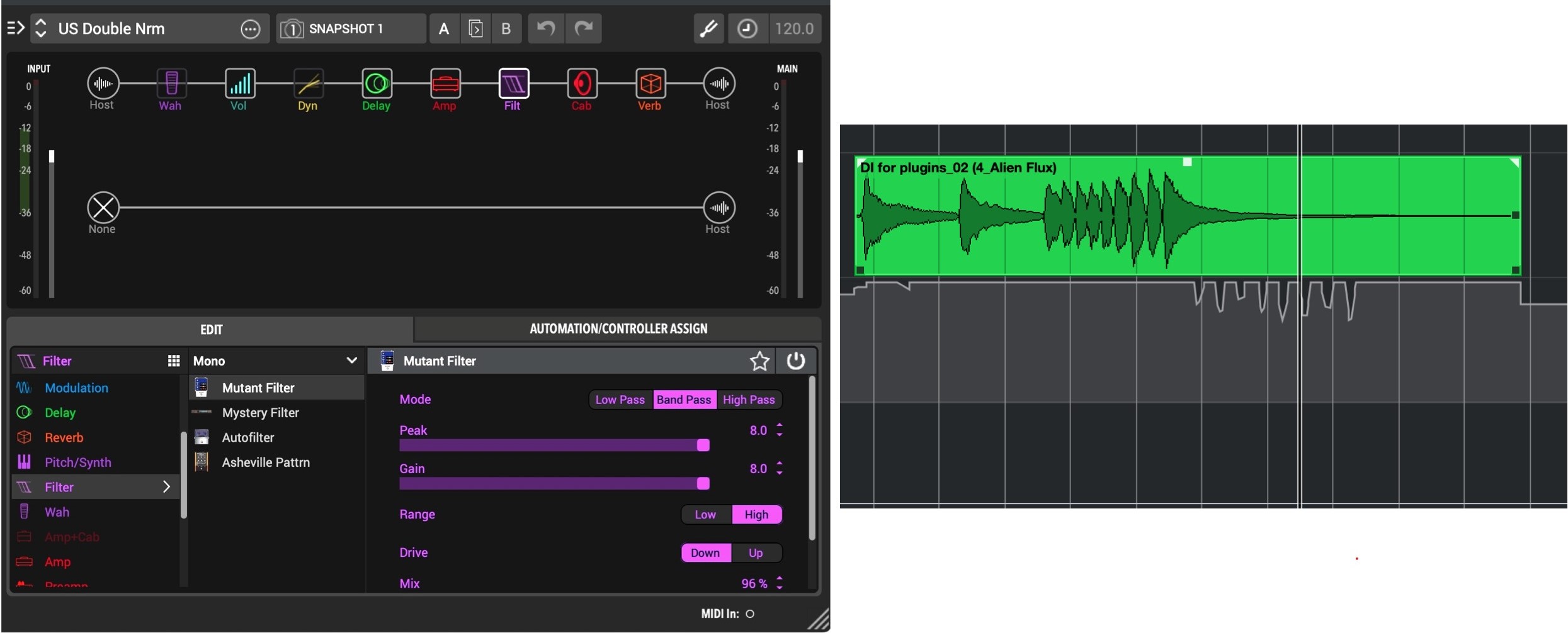
5. Haunted Rings
A ring modulator is always a good choice for creating strange sounds. This particular example was created inside Cubase with four Steinberg effects plug-ins.
The effects chain starts with the Amp Simulator plug-in on a clean setting. Next is the Ring Modulator, which adds a buzzy resonance. Then roomworksSE provides a large reverb ambience with a decay time of close to 11 seconds. Finally, the Mono Delay plug-in adds motion to the sound: I set it to a short 50 ms delay time with the Feedback and Mix knobs at or near 50 percent. In the audio clip, I’m playing a three-note arpeggiated pattern with an augmented fifth interval to create dissonance.
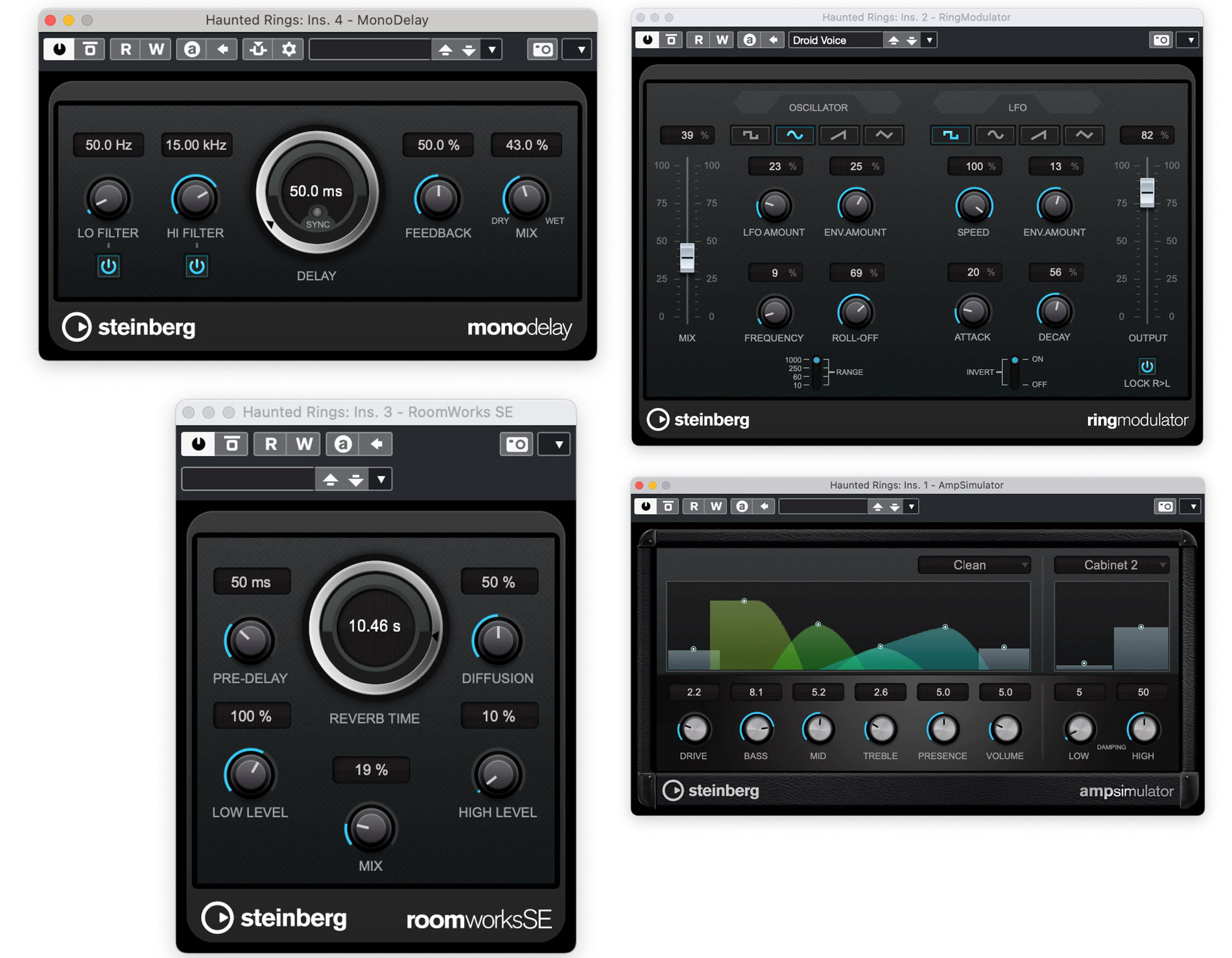
6. In the Depths
This sound was also created exclusively with Cubase plug-ins. The sustain is created with copious gain in VST Amp Rack’s Plexi model, exaggerated with a Fuzz box from the plug-in’s Post Effects. In the Pre-Effects, an Octaver adds a lower octave to the sound. Finally, there’s some reverb from the REVerence convolution reverb plug-in with the English Chapel preset.
The audio clip below consists of a power chord that sustains throughout the entire duration. The pitch variations resulted from my lightly moving the guitar’s whammy bar.
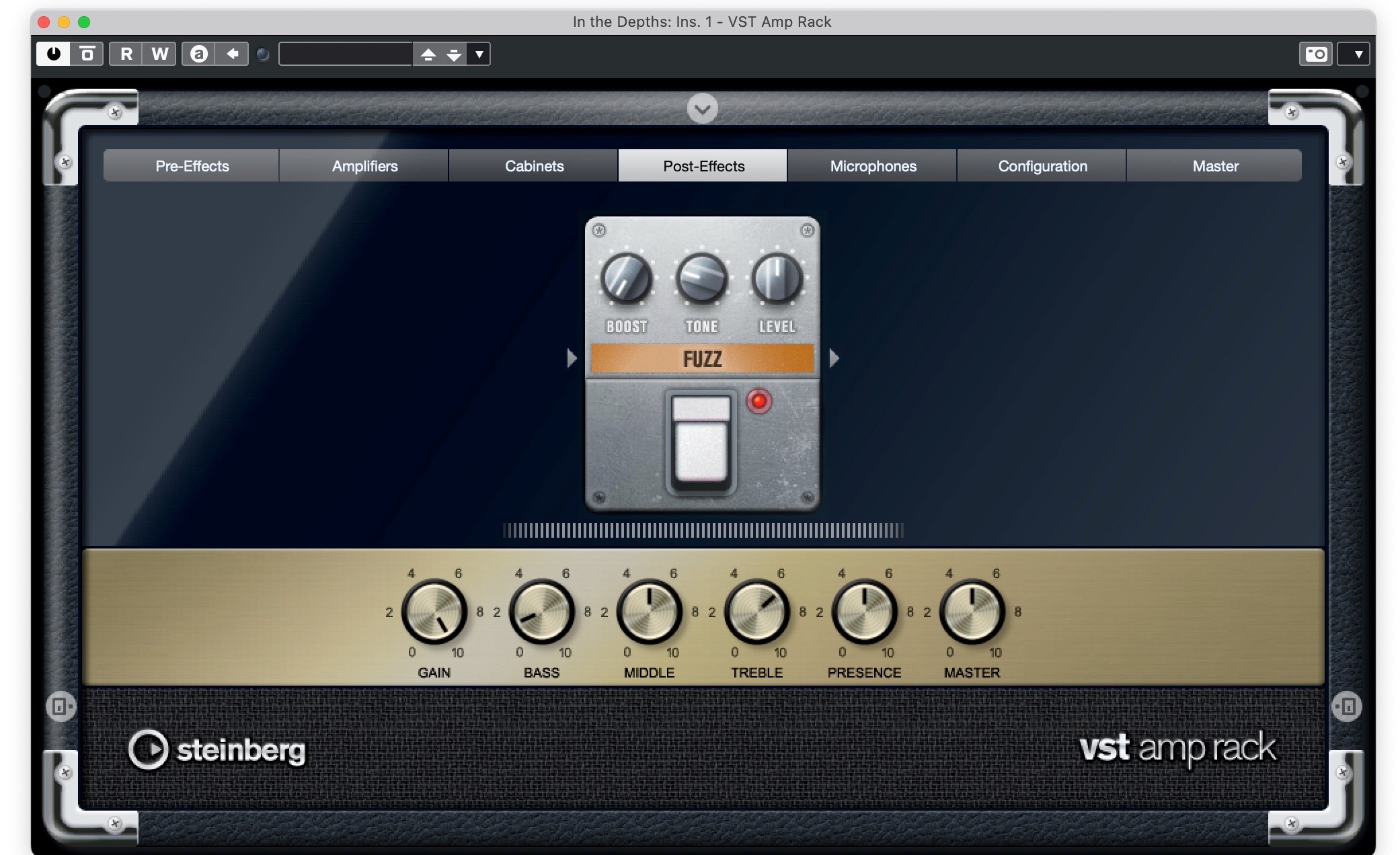
7. Demented Bells
This sound uses the THR30II exclusively. The amp is set to Hi-Gain/Classic, and has both the Flanger effect and Echo/Rev at their highest settings.
This example incorporates harmonics played on the guitar to create a bell-like sound. Because the intervals between the harmonics available in standard tuning at the fifth, seventh and twelfth frets are major, I tuned several strings down a half step, including the high E, D and low E. The idea was to create more dissonant-sounding intervals.
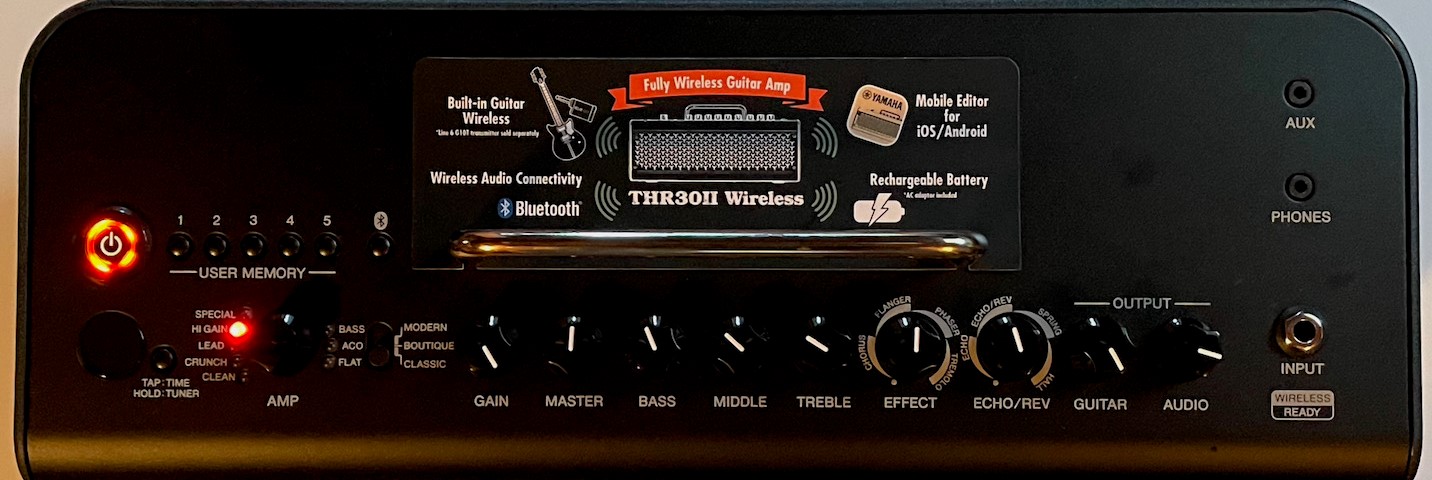
8. Vampire Waking
For this example, the note choice — mainly from the diminished scale — was even more important than the sound for creating an ominous vibe. Sonically, I used the Helix Native plug-in with the Brit Plexi Jump amp and cabinet with Fuzz Pi, adding to the distortion.
The most critical effect in achieving the sound is the Glitch Delay in Helix Native, which divides each delay repeat into slices (in this case, four) and changes their order. The result is a short delay with many repeating taps that are rhythmically random.
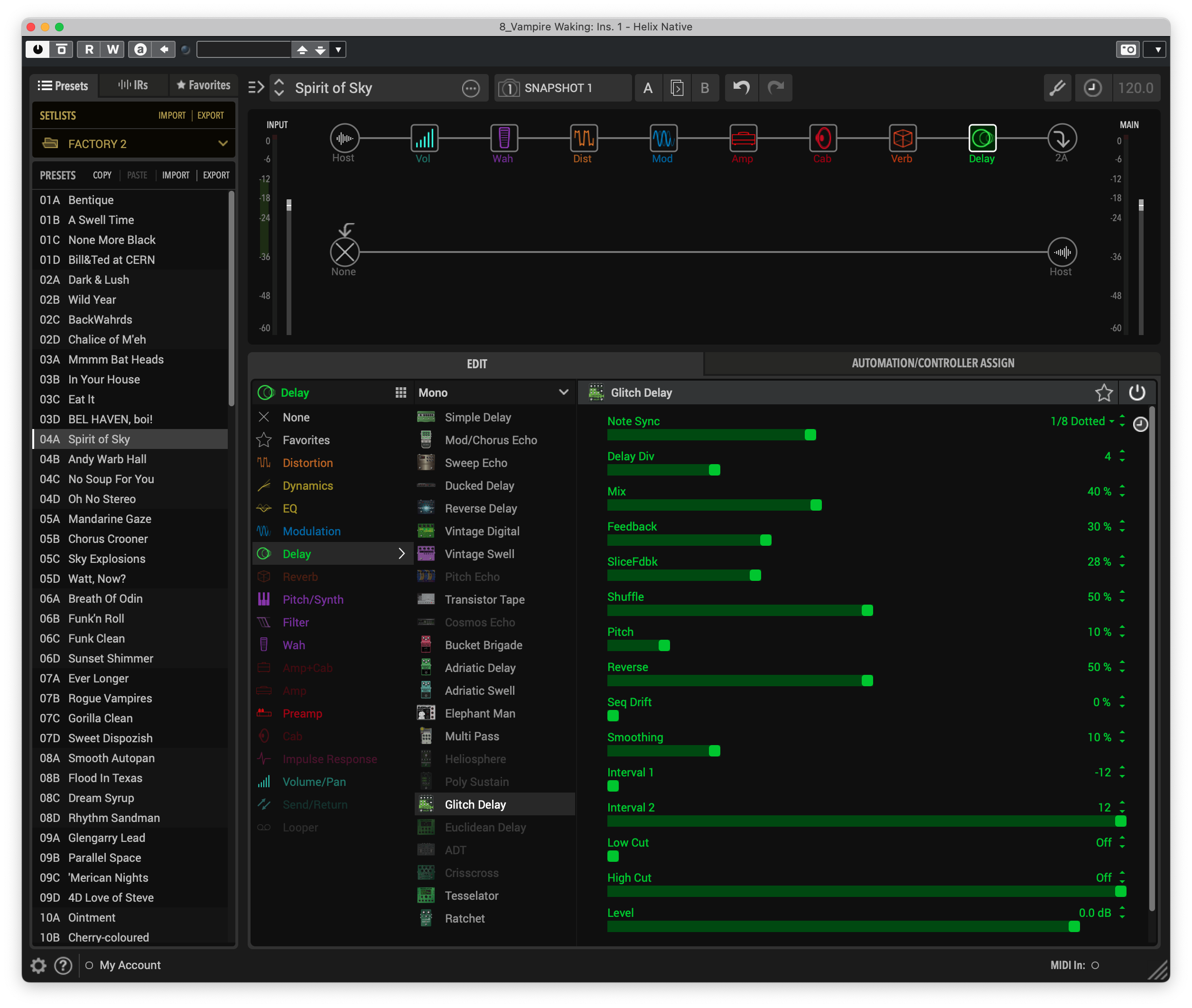
9. Ghostly Slide
The Theremin is an electronic instrument often used to create ghostly sounds in horror movies. Here, I’m using a guitar slide to help create a pseudo-Theremin effect.
The amp sound comes from the VST Amp Rack plug-in with the Plexi model selected. I used Overdrive in the Pre-Effects section, and Fuzz and Compressor in the Post-Effects section, with the idea being to get as much gain as possible. To add more stereo width, I inserted Steinberg’s Ping Pong Delay plug-in at the end of the effects chain, set to a very short delay time.
The part you’ll hear in the audio clip below was played on the G, B and high E strings up high, with very heavy finger vibrato.

10. Diminished Returns
Here’s another example that only uses THR30II effects. It features a high-gain setting with the Tremolo and Hall reverb effects maxed out. In the audio clip, I’m playing fast arpeggiated notes from a diminished chord, slid up four frets after each three-note phrase. Then at the end, it just sustains and lets the THR tremolo effect provide the motion.











